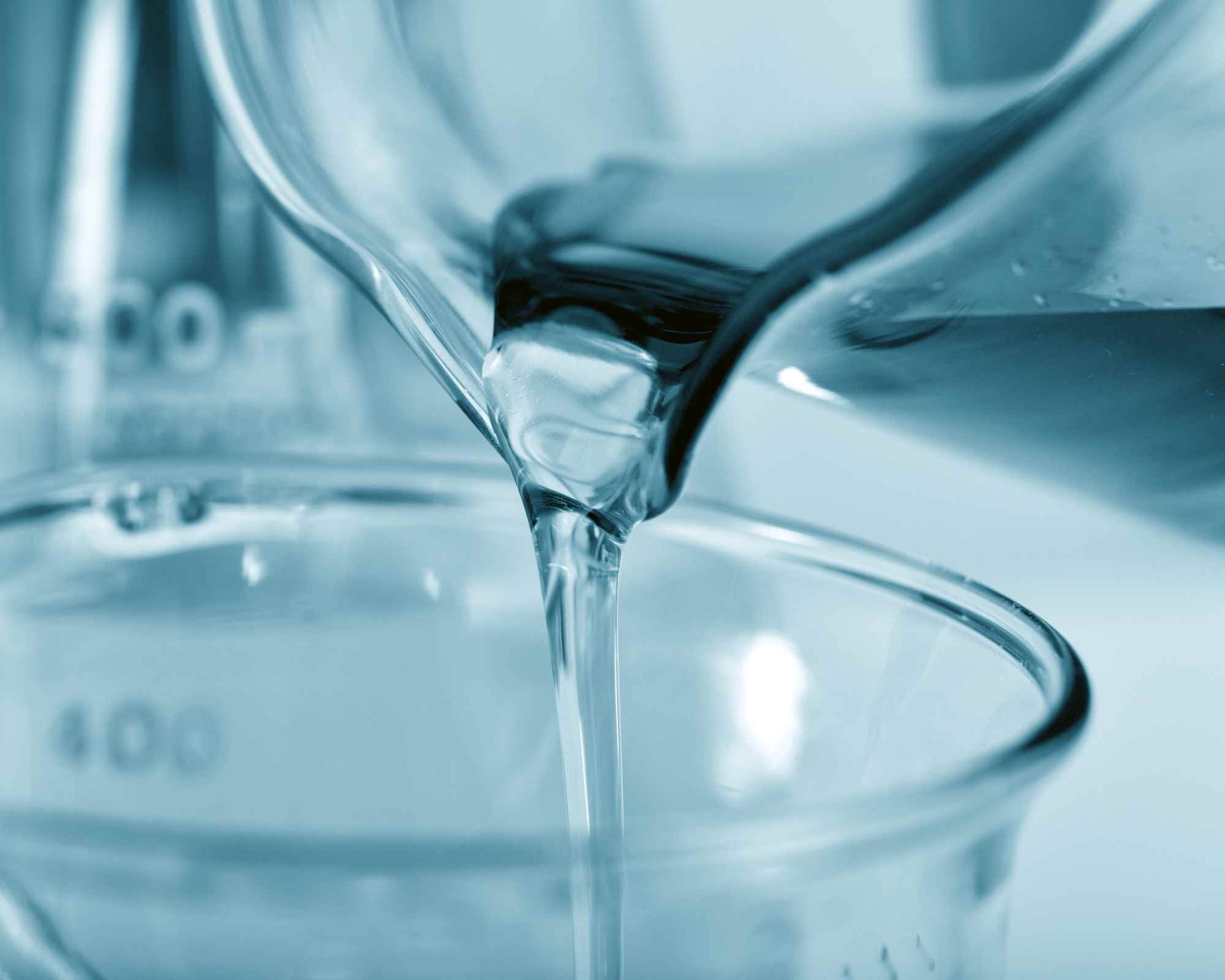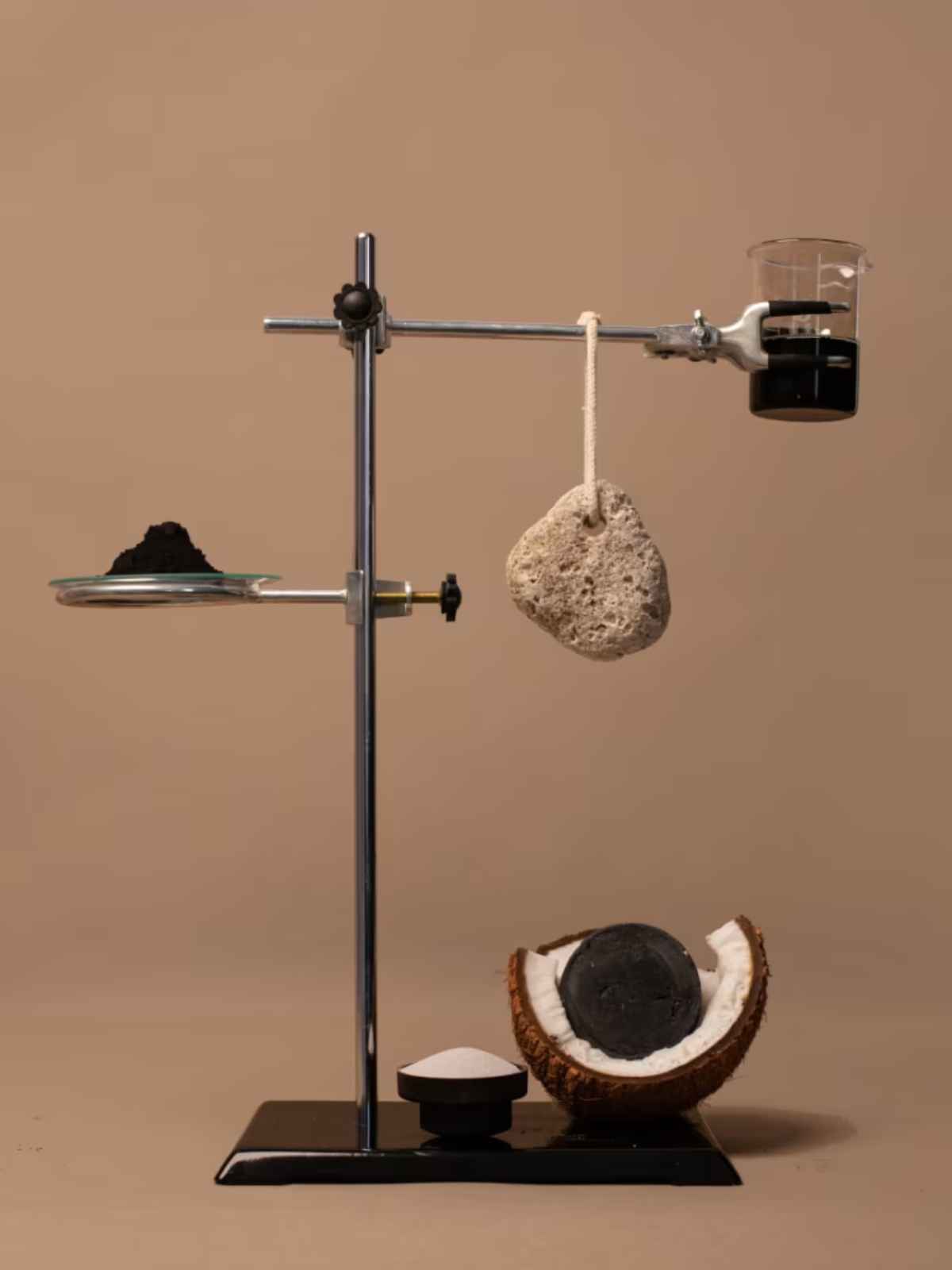Water is the first ingredient listed on many of the beauty products we use on a daily basis, but brands’ water impacts are often hidden from consumers. Even so-called “waterless” products aren’t water-free, either. Why is beauty drinking up so much clean water? We asked journalist Theresa Yee to investigate.
The role of water in beauty products
Beauty is one thirsty industry, with most of the products you use containing mostly water.
Water—or, “aqua” by its official cosmetic ingredient (INCI) name—is often the first ingredient listed on many beauty and personal care products, from cleansers and creams to conditioners. According to Natrue, the average beauty product can contain anywhere from 60% to 85% of water, and for rinse-off formulas, it’s even higher. “The amount of water used varies depending on the product type with creams containing up to 80% water or shower gels and shampoos getting closer to 100%,” explains Sian Sutherland, co-founder of A Plastic Planet and PlasticFree.
What is the purpose of using water in beauty products? Essentially, water provides a functional benefit, acting as a solvent. It’s used to dissolve ingredients like conditioning or cleansing agents (such as butters) to give creams and lotions a smoother, softer texture for better absorption and makes it easier to apply onto the skin.
Water: a precious resource
Did you know that around 71% of the Earth’s surface is covered in water, but only 3% is freshwater? Water is a precious commodity, with demand outstripping supply in some regions of the world.
A widely referenced 2016 report found that four billion people—almost two-thirds of the world’s population—experience severe water scarcity for at least one month each year. And while it is notoriously difficult to report on and predict global water demand, some modelling suggests that it’ll only increase in the coming years.
There is the distinct need to rebalance our consumption and work with the Earth and not against it.
What’s more, according to UNICEF it is predicted that half of the world’s population will be living in water-stressed areas by 2025. And it’s only going to get worse. By 2030, some 700 million people could be displaced by a lack of access to fresh water.
“With growing water scarcity and habitats under attack, there is the distinct need to rebalance our consumption and work with the Earth and not against it,” says Sutherland. And beauty has a clear responsibility when you survey the full value chain.
The beauty industry’s water footprint
The beauty industry, like fashion and so many other large industries, uses a lot of water. That means its water footprint is significant, but just how significant is hard to answer precisely at scale—though we know that water is central in almost every stage. “Water is used throughout the entire lifecycle of a beauty product, from collecting the component elements to [producing] the packaging it’s wrapped in,” explains Sutherland
Indeed, water is crucial at every turn—from harvesting and manufacturing the raw materials to making product packaging, transportation goods, and of course, the end consumer’s use when they’re rinsing off formulas like shampoos, body washes and facial cleansers.
Water is used throughout the entire lifecycle of a beauty product, from collecting the component elements to producing the packaging it's wrapped in.
Some studies have suggested that growing natural ingredients is the most water-intensive part of a beauty product’s lifecycle. While this varies depending on the raw material and its production process, there is no doubt that agriculture, on the whole, requires a huge amount of water. In fact, agriculture accounts for around 70% of all global freshwater withdrawals, according to UN estimates. Dr Terence Chung, cosmetic scientist and co-founder of FRUU.. Cosmetics—which makes fruit-based beauty products—says that: “Plant-based ingredients tend to use more water, especially since crops need regular irrigation.” (It’s worth noting that the production of synthetic or petrochemical-derived ingredients is also water intensive, though comparative lifecycle studies aren’t widely available.)
Then there is the water required in the manufacturing process, too, which ranges from cleaning equipment to running the factories’ facilities. And manufacturing packaging, especially plastic, also involves intensive water use—some estimates suggest 22 gallons of water are needed to make one pound of plastic. And the impact doesn’t stop when it reaches your bathroom cabinet: a study looking at the water consumption of body washes in the shower found that around 4.15 litres of water is used to rinse off shower gel from the body, and that’s not including heating the water or wetting the body (4.77 litres).

How can the beauty industry reduce its water impact?
One challenge to addressing the beauty industry’s impacts is the lack of transparency from the brands that guzzle the most aqua in their supply chains. On one hand, there are some positive signs that more brands are disclosing information about their water usage. For example, 55% of the large brands rated in Good On You’s first Beauty Sustainability Scorecard are disclosing to CDP Water—a global reporting project that encourages brands to share their water-related impacts and actions. Of those that have reported to CDP, 60% earned top scores.
That’s a start in the right direction, but there is still a long way to go because 80% of the large brands that haven’t disclosed to CDP do not appear to have taken meaningful water reduction initiatives in their supply chain.
Becca Willcox, beauty ratings manager at Good On You, explains: “Some brands are creating innovative products to reduce water as an ingredient—for instance, shampoo and conditioner bars. However, our data indicates fewer are taking action on water use in manufacturing, such as through recycling and reuse, or factoring in the water used in agriculture during the selection of their natural ingredients.”
Some brands are creating innovative products to reduce water as an ingredient.
There are a handful of brands that have taken action to minimise their water footprint by optimising water consumption in factories or utilising more conscious ingredient harvesting processes. For instance, 14% of L’Oréal’s manufacturing sites use 100% reused and recycled water, and it says it’ll implement the same in all of its factories by 2030. And Shiseido-owned brand Ulé employs a vertical farming method where ingredients are grown in vertically stacked layers in controlled environments—the result is a farming process that uses 95% recycled water.
Other brands are exploring water-conscious approaches to product formulations such as waterless—or anhydrous—products. “A waterless beauty product is one that doesn’t use water in its formula or contains less than 5% water,” explains Chung. Water is replaced with concentrated active ingredients, usually botanical waters or plant oils, and comes in many different forms including solids, powders, liquids and balms.
And other product innovations include fast-rinse-off and non-rinse off formulas, or solid formats and powder formulations that use no H2O but require water to activate the product upon application. Good examples of this are Disruptor London’s multifunctional shampoo and shave solid bars, and Susteau’s powder-to-liquid haircare formulas.
Are waterless beauty products better for the environment?
The reality is that every single product on our bathroom shelf has a water footprint—even if it’s waterless. You see, a product may not have water in its final formulation, but it’s highly likely that large amounts of water have been used in the manufacturing and production processes.
But how much of an impact is it really having? “Waterless products don’t save as much water as some may think,” says Chung. “But they do come with a few other benefits.”
Here are some benefits of waterless products, which experts generally agree are a good consumer choice:
- Solid formats can reduce the amount of packaging required, and plastic-free packaging alternatives can be used instead.
- Lower transportation emissions as products are lighter in weight, reducing the impact of shipping.
- Higher concentration of active ingredients and greater potency as the formulation is not diluted in water.
- Waterless products do not require as many preservatives, so they have a longer shelf life.
- Consumption could be reduced since waterless products tend to last longer in use.
But from a product design perspective, waterless products still pose challenges for brands to get right. One of the biggest is ingredient efficacy. Chung explains that active ingredients such as vitamin C, niacinamide and certain antioxidants require water to dissolve and properly absorb into the skin.
The more that consumers and organisations demand greater transparency, the more likely companies are to reveal how much water is used and its impact in every step of the supply chain.
“Waterless products may have a different scent profile compared to water-based ones,” says Chung. They also tend to be a little thicker and heavier on the skin, which may not be as comfortable especially in humid weather. And some fragrances dissolve better in water.
The beauty industry is highly dependent on water, from ingredient harvesting to equipment cleaning and end consumer use, but we are seeing brands taking small steps to reduce their water footprint. We still have a long way to go, but the more that consumers and organisations demand greater transparency, the more likely companies are to reveal how much water is used and its impact in every step of the supply chain.



















